Mycterothrips glycines (Okamoto, 1911)
和名:ダイズアザミウマ
北海道~九州に広く分布し、海外では韓国、中国、台湾から知られる。7~10月頃に主にダイズやアズキ等のマメ科の葉に見られるが、キュウリ、ナス、クワの葉などにもみられる。触角の長さに性的二型が見られ、オスは触角第6節が長く60~80μmで、第1~5節の合計の長さの訳0.46倍でメスの約1.5倍の長さになる。本州のネムノキAlbizia julibrissinに見られるM. albiziae Masumoto & Okajimaは本種によく似るが、体色や触角の色がより濃いこと、メスでは前胸背板上の刺毛が50本以上と多いこと(M. glycinesでは40本以下)、オスの触角第6節はより長く85~105μmで、第1~5節の合計の長さの0.54~0.7倍とより長いこと等で識別できる。
This species is widespread into Hokkaido to Kyushu, Japan, and is also known from Korea, China, and Taiwan. It is mainly breeding on the leaves of Fabaceae such as Glycine max and Vigna angularis at July to October, and the adults is also collected from the leaves of Cucumis sativus, Solanum melongena and Morus australis. Moreover, this species indicates distinct sexual dimorphism in the antennal length. In male, antennal segment VI is 60-80 microns, about 1.5 times as long as that of female and about 0.46 times as long as the combined length of segments I-V. M. albiziae Masumoto & Okajima, which occurs on the leaves of Albizia julibrissin in Honshu, Japan, is very similar to M. glycines but it can be distinguished from the later species as followings: body and antennae are darker, the pronotum with more than 50 discal setae (less than 40 in M. glycines) in female, male antennal segment VI 85-105 microns and 0.54-0.7 times as long as the combined length of segments I-V.
-
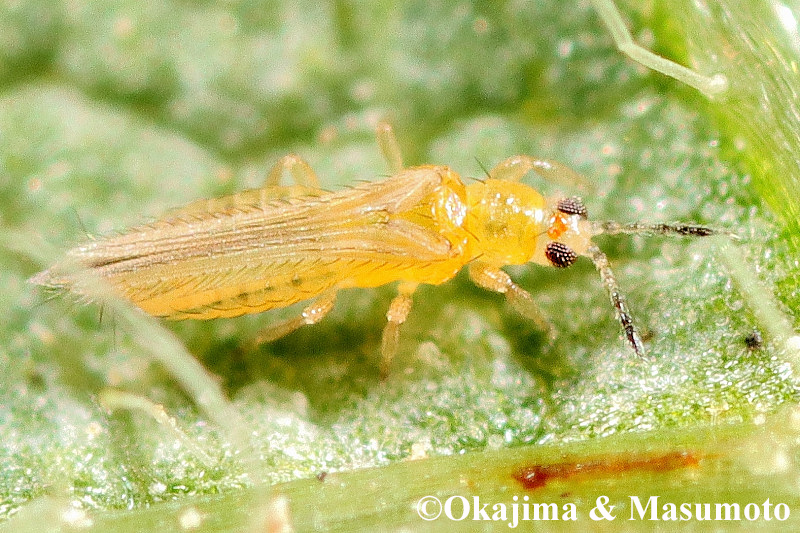
Female
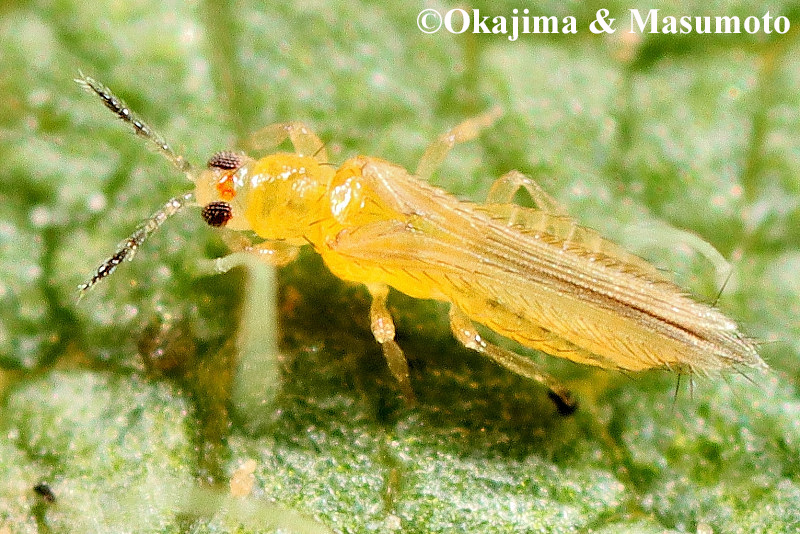
Female
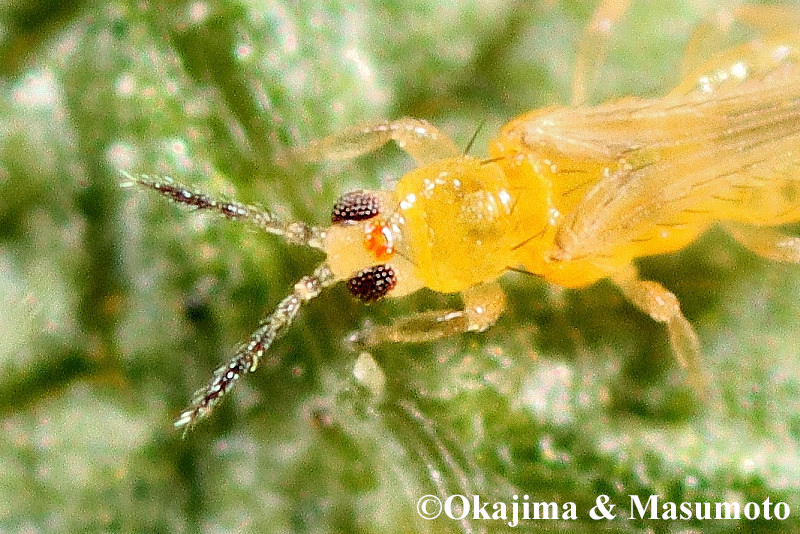
Female, head & thorax
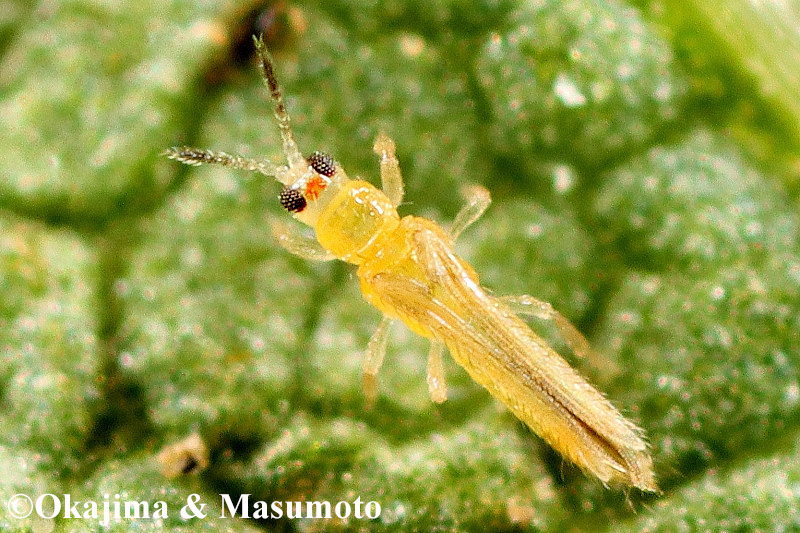
Male
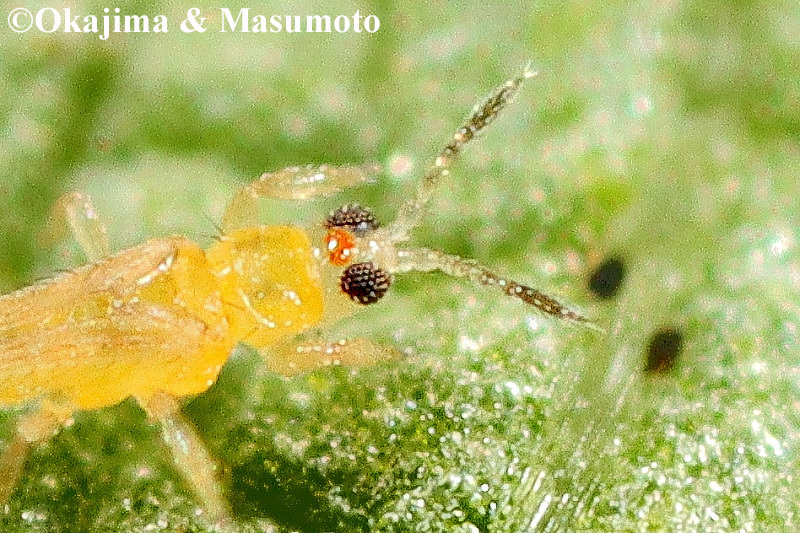
Male, head and thorax